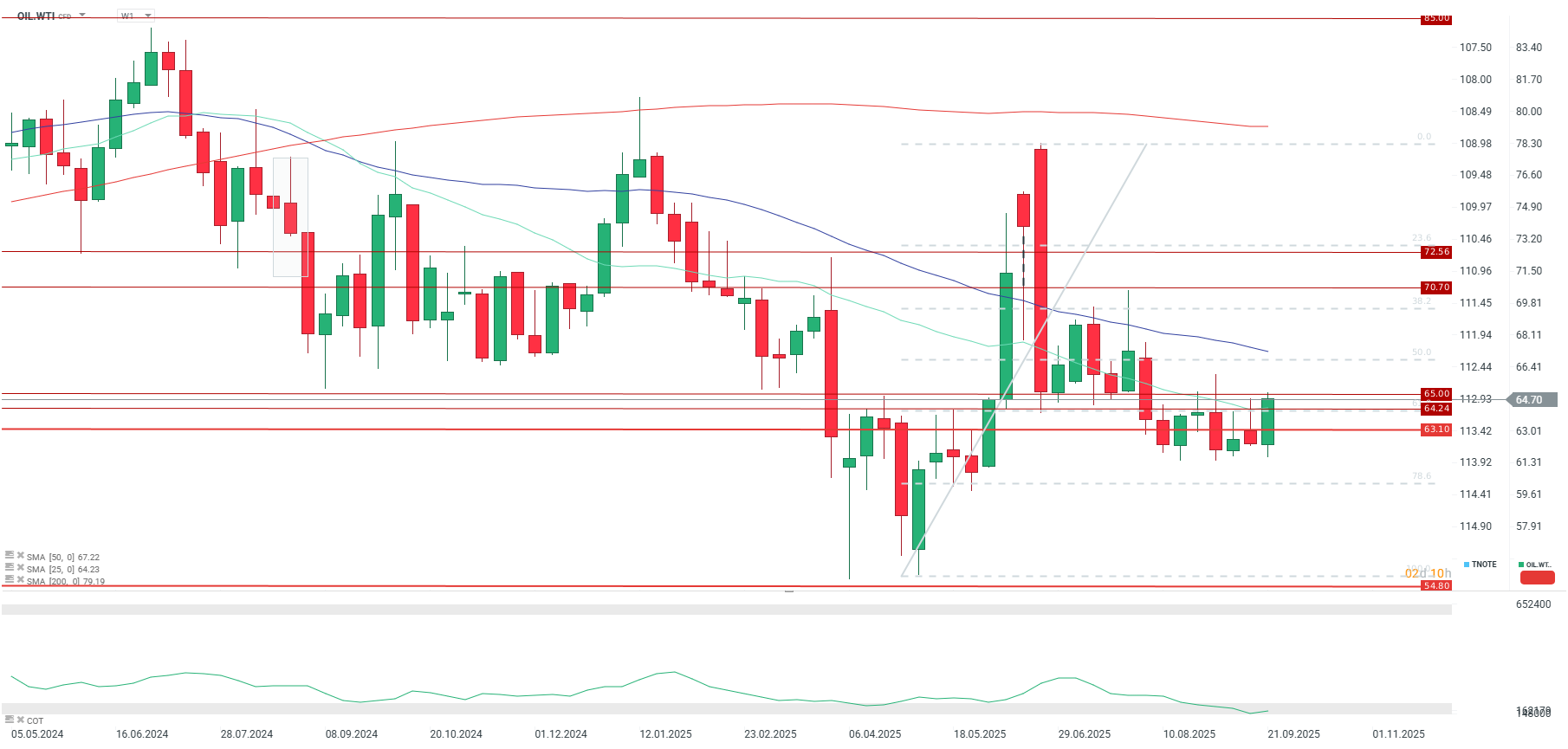Oil prices have recorded a strong two-day rally after a series of declines, driven by rising fears of disruptions to Russian crude supplies. WTI crude has gained nearly 4% since the beginning of the week, marking some of the sharpest daily increases in weeks.
Mounting Risks to Russian Supplies
The price surge is fueled by growing risks to Russian energy exports. Russia is reportedly considering another ban on diesel exports for certain companies following a series of Ukrainian drone attacks on Russian refineries. The latest overnight strikes on a major oil pipeline triggered a sharp rise in gasoline and diesel prices on Russia’s domestic commodity exchange, Spimex.
Interestingly, traders note that Russia’s limited refining capacity could ultimately increase crude exports. However, the possibility of restrictions on actual oil production cannot be ruled out.
Key Importers of Russian Oil
Western sanctions have dramatically reshaped the geography of Russian oil exports. Current main buyers include:
-
China – 47%-50% of Russian exports (~2.2 million barrels per day)
-
India – 37%-38% (~1.92 million barrels per day)
-
Turkey – ~6%
-
European Union – 6%-7% (down sharply from around 30% before Russia’s invasion of Ukraine)
China became the largest importer of Russian oil in 2022, displacing Saudi Arabia as the top supplier. India, meanwhile, ramped up imports from virtually zero at the start of 2022 and now benefits from preferential pricing. This allows India to re-export refined products — including to Europe and the U.S. — even though the crude originates from Russia. India is now the largest seaborne importer of Russian oil, accounting for around 60% of that market.
Russia remains a major global player, producing over 10 million barrels per day, about 10-11% of total world supply, and exporting roughly 5 million barrels per day.
Expansion of the “Shadow Fleet”
Russia has built an extensive “shadow fleet” of hundreds of aging tankers to bypass Western sanctions. This fleet now represents about 17% of the world’s total oil tanker capacity. The average age of these vessels is around 20 years, compared with 13 years for the global fleet.
The shadow fleet helps evade the so-called “price cap” on Russian crude, which was previously set at $60 per barrel. Since early September, a stricter formula has been introduced, pegging Russian crude at market price minus 15%, effectively lowering the cap to around $48 per barrel.
Beyond pricing, the shadow fleet also enables disguising oil origins via ship-to-ship transfers, and often uses falsified insurance documents and GPS trackers.
Russia Provokes in Europe
Recent weeks have seen a notable increase in Russian military activity near NATO borders, including confirmed airspace violations by drones and aircraft. In early September, more than 20 drones entered Polish airspace, followed by similar incursions into Romania. Last week, three MiG-31 fighter jets flew over Estonia, while drone incidents have also been reported in Norway and Denmark.
Russia has also appeared in U.S. airspace near Alaska with Tu-95 bombers and Su-35 fighters, which were subsequently escorted out by U.S. forces.
NATO’s Response and Sanctions Outlook
NATO has launched Operation Eastern Sentry, involving continuous fighter patrols, enhanced radar coverage, and reinforced air defense along its eastern flank.
President Trump said NATO countries should “shoot down Russian aircraft violating their airspace” and urged European allies to immediately stop purchasing Russian energy:
“I can tell you they must immediately end all energy purchases from Russia. Otherwise, we are all wasting a lot of time.”
Trump also spoke positively about Ukraine but showed no indication of imposing strong new sanctions on Russia. Despite export restrictions costing Russia hundreds of billions of dollars, revenues remain robust. As such, existing sanctions have so far proven ineffective. Still, sharper U.S. action could eventually force Russia to make concessions toward Ukraine.
Market Outlook
Crude oil is currently seeing its strongest price rally since mid-June. WTI has approached $65 per barrel, its highest since early September. While the threat to Russian supply may not yet be fully materialized, continued tensions could drive prices higher toward $67.
On the other hand, fundamentals still point to significant oversupply, making sustained prices above $70–80 per barrel appear unjustified. Without the Russia-related risk premium, prices would likely already have fallen below $60.
The most probable scenario is for WTI to remain range-bound between $61.5 and $66 per barrel.

Source: xStation5
Daily summary: Optimism on Wall Street eases again🗽US Dollar drops from recent highs
Coffee futures drop as huge Brazilian shipping to Europe eases supply concerns
Cocoa falls 3% amid improving crops in West Africa
Crypto decline amid weak sentiments on Wall Street 📉
The content of this report has been created by XTB S.A., with its registered office in Warsaw, at Prosta 67, 00-838 Warsaw, Poland, (KRS number 0000217580) and supervised by Polish Supervision Authority ( No. DDM-M-4021-57-1/2005). This material is a marketing communication within the meaning of Art. 24 (3) of Directive 2014/65/EU of the European Parliament and of the Council of 15 May 2014 on markets in financial instruments and amending Directive 2002/92/EC and Directive 2011/61/EU (MiFID II). Marketing communication is not an investment recommendation or information recommending or suggesting an investment strategy within the meaning of Regulation (EU) No 596/2014 of the European Parliament and of the Council of 16 April 2014 on market abuse (market abuse regulation) and repealing Directive 2003/6/EC of the European Parliament and of the Council and Commission Directives 2003/124/EC, 2003/125/EC and 2004/72/EC and Commission Delegated Regulation (EU) 2016/958 of 9 March 2016 supplementing Regulation (EU) No 596/2014 of the European Parliament and of the Council with regard to regulatory technical standards for the technical arrangements for objective presentation of investment recommendations or other information recommending or suggesting an investment strategy and for disclosure of particular interests or indications of conflicts of interest or any other advice, including in the area of investment advisory, within the meaning of the Trading in Financial Instruments Act of 29 July 2005 (i.e. Journal of Laws 2019, item 875, as amended). The marketing communication is prepared with the highest diligence, objectivity, presents the facts known to the author on the date of preparation and is devoid of any evaluation elements. The marketing communication is prepared without considering the client’s needs, his individual financial situation and does not present any investment strategy in any way. The marketing communication does not constitute an offer of sale, offering, subscription, invitation to purchase, advertisement or promotion of any financial instruments. XTB S.A. is not liable for any client’s actions or omissions, in particular for the acquisition or disposal of financial instruments, undertaken on the basis of the information contained in this marketing communication. In the event that the marketing communication contains any information about any results regarding the financial instruments indicated therein, these do not constitute any guarantee or forecast regarding the future results.


